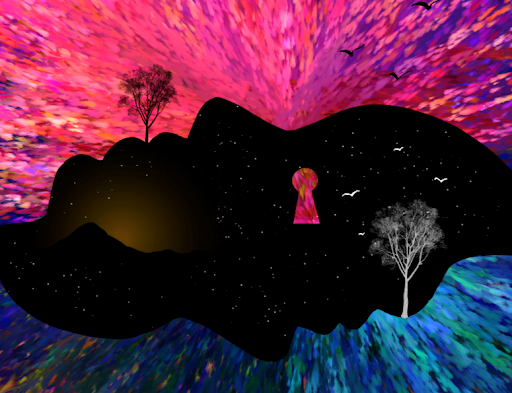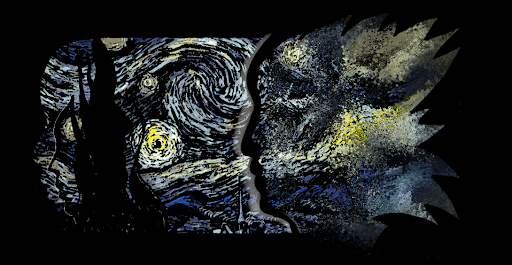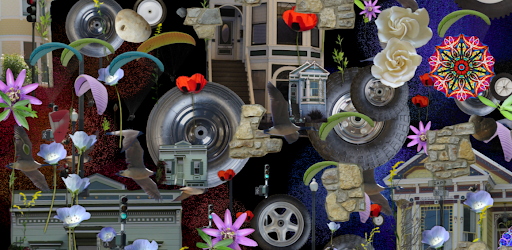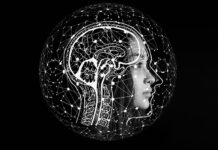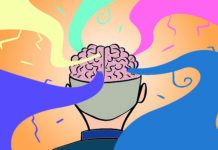“Imagination is more important than knowledge. Knowledge is limited. Imagination encircles the world.” Y”our imagination is everything. It is the preview of life’s coming attractions.” “The true sign of intelligence is not knowledge but imagination.”
Albert Einstein
Imagination is our ability to create something new, visualize objects, sensations, or ideas. Without it, we would have not discovered what has been discovered; we would have not written books, created paintings, sculptures, or films. The world of science, art, literature, and others, could not exist without it.
Phycologists propose several types of imagination. The first type is the so-called effectuative imagination, which enables us to analyze everything and create a new idea. The second type is called intellectual or constructive imagination. Here, the idea is developed based on the available methods. In other words, we conduct extensive research on the existing solutions. Philosophers, politicians, and managers commonly practice constructive imagination.
Interestingly, empathy—the ability to understand or feel other people’s emotions—is also a type of imagination. Another type is imaginative fantasy, which is involved in creating ideas in our minds from scratch. Writers and artists are usually gifted with it. Strategic imagination is involved in picturing the possibilities, what could happen, the possible risks, benefits, and outcomes in many situations.
Emotional imagination is about drawing from the awareness of human emotions and creating new things on that basis. For example, to write a book in which the main character will catch the mills, you need to look deep into the recesses of the human soul. In a way, it is related to empathy.
We also need the imagination to recall past events, facts, read texts, or hear songs. That is called memory reconstruction. For example, when a policeman asks you what you did last Friday. You have to recall images from that period in your head and explain your “alibi.” A kind of imagination, although unconscious, are also our dreams. Sometimes a traumatic experience that has fallen out of our consciousness can come back in dreams. It can be distorted and not entirely true.
What is the role of imagination in our lives?
We can say that it gives us pleasure. Ideas about future pleasant moments give us considerable enjoyment. It helps us understand jokes and other people’s sense of humor. It provides colors to our lives. Thanks to the imagination, we can show compassion, share emotions and feelings. It also helps us recreate past experiences and put them in a new order. And on this basis, our brain creates a new image of past experiences. The imagination can be considered a mixture of memory, the ability to perceive the world and draw conclusions. So, it is responsible for how we perceive and analyze the world around us.
Where is the imagination formed in the brain?
The areas of the brain responsible for imagination are mainly the neocortex and thalamus. It was believed that the left part of the brain is responsible for logic and analytics, and the right allows us to think creatively. However, it turned out that for these processes to take place, both hemispheres must cooperate. Since imagination is a complex process that includes memory, emotions, consciousness, and abstract thought, some scientists believe this complex creation took shape in childhood.
Do you remember your careless childhood while playing in playgrounds? That environment encourages physical activity, imaginative play, and creativity, allowing children to imagine whatever they want. Imagination makes it possible for children to play without rules or structure. It helps gain essential lifelong skills from decision-making to behavior and social skills, as well as to develop lingual, emotional, creative, physical, lingual, and even problem-solving skills that are so important in adult life.
Is it possible to influence and manipulate human imagination?
In some sense, creativity helps people overcome various types of phobias or post-traumatic stresses. If you are afraid of flying airplanes, you can go to a flight simulator to help you overcome this fear. But all this is only possible with your imagination.
Can we measure our imagination?
One method to measure imagination psychologists use is to ask for unusual uses for simple items such as a cardboard box. This seemingly simple task turns out to be insoluble for many of us. Our response is then analyzed in terms of the number of ideas, fluidity, and more. Other tests consider creative skills such as visual-spatial abilities necessary for design (e.g., drawing) or scientific skills. Tests can be taken onsite or online; in either case, they should be evaluated by a qualified person.
Can you be unimaginative?
It turns out that yes. Such a disorder is called aphantasia. This condition can be present from birth, or it can be developed later in life. Its late occurrence can be caused by psychological conditions or brain injury. Additionally, some impatient people cannot create any mental image (the image of the experience of visual perception) on their own. In other words, if you tell a person to “close your eyes and imagine the ocean,” they won’t be able to do it. It sounds a little scary.
People with this condition can, for example, hear music but cannot imagine the images associated with it. Also, some of these people cannot create a mental smell, sound, or even emotions. Some people with aphantasia, however, may experience images in dreams. There is currently no medicine or therapy for aphantasia. Interestingly, you may not know that you have this disease.
Imagination also plays an essential role in our careers. Probably each of us was once asked what job we would choose in the future. While being a kid, it was pretty easy to answer. First, the children imagine themselves in that job, then answer the question. The same happens to adults while making choices, for example, while playing their favorite game. The ideas and plans that you have in your mind are just all around in the air in real life and depend on you.
Imagination is not just seeing what we want to see or feeling what we want to feel. Some people can imagine things by connecting their senses. That capacity is called synesthesia. These people can experience stimuli in other ways like seeing sounds, smelling colors, or hearing views. These extracurricular abilities are generally taken for a disorder, but these people are often called unique. One in 2000 people has these abilities to experience stimuli through senses more than non-synesthetes. Some studies show that even 2-4% of the population can have it. Some drugs like LSD or hashish cause similar effects but for a short time.
There are two theories about synesthesia. One of them said that people with these disorders usually have additional nerve connections that convey impressions from various sense organs. As a result, sensory experiences are mixed and cause synesthesia. The second theory says that synaesthetic have the same amount of neuron connections as an average person. Still, their balance between inhibition and silencing of impulses reaching the brain is disturbed.
How can we stimulate creativity?
Single people are more likely to have increased brain areas related to memories and future planning, which means that loneliness promotes imagination. It is more pleasant to look for new experiences and challenges for our brains. Learning new things requires thinking, i.e., the creation of new connections between neurons, which automatically expands our imagination. You can also change your surroundings; the color blue has been proven to improve our creativity. Go for a walk; it also favors our vision. Also, practicing activities that require us to use our imagination, like reading or painting, can develop this ability.
Did you know that sometimes imagination becomes a disease? One of them is hypochondria, when excessive thoughts, feelings, or behaviors are related to somatic symptoms or associated health concerns. Another imagination anomaly occurs in schizophrenia spectrum disorders in which patients do not distinguish reality from dreams, memory, and imagination.
This article is a joint work of Agnieszka Pregowska (Institute of Fundamental Technological Research, Polish Academy of Sciences), Jakub Hilus (Faculty of Chemistry, University of Warsaw), and Magdalena Osial (Faculty of Chemistry, University of Warsaw) as a part of the Science Embassy project. Image Credit: Magdalena Osial.
References
- Pearson, J. The human imagination: the cognitive neuroscience of visual mental imagery. Nature Review Neuroscience 20, 624–634 (2019). DOI: 10.1038/s41583-019-0202-9
- Bartlett, F. Types of Imagination. Philosophy, 3(9), 78-85 (1928) DOI:10.1017/S0031819100012651
- Reddan, M.C., Wager, T.D., Schiller, D. Attenuating Neural Threat Expression with Imagination. Neuron 100(4), 994-1005.e4 (2018). DOI: 10.1016/j.neuron.2018.10.047
- Roberts, R.O., Cha, R. H., Mielke, M. M., Geda, Y.E., Boeve, B.F., Machulda, M. M., Knopman, D.S., Petersen, R.C. Risk and protective factors for cognitive impairment in persons aged 85 years and older, Neurology May 84(18),1854-1861 (2015). DOI: 10.1212/WNL.0000000000001537
- Schlegel, A., Kohler, P. J., Fogelson, S. V., Alexander, P., Konuthula, D., Tse, P. U. Network structure of the mental workspace, Proceedings of the National Academy of Sciences 110(40), 16277-16282 (2013). DOI: 10.1073/pnas.1311149110
- Melnick, M. The biological imagination. Journal of Craniofacial Genetics and Developmental Biology. 11(3),121 (1991).
- Welter, M.M., Jaarsveld, S., van Leeuwen, C., Lachmann, T. Intelligence and creativity: over the threshold together? Creativity Research Journal 28(2),212–8 (2016). DOI:10.1080/10400419.2016.1162564
- Beaty, R.E. The Creative Brain, Cerebrum cer-02-20 (2020).
- Keogh, R., Bergmann, J., Pearson, J. Cortical excitability controls the strength of mental imagery, Elife 9, e50232 (2020) DOI:10.7554/eLife.50232
- Mehta, R., Zhu, R.J. Blue or red? Exploring the effect of color on cognitive task performances. Science 27,323(5918),1226-9 (2009). DOI: 10.1126/science.1169144
- Oppezzo, M., Schwartz, D. L. Give your ideas some legs: The positive effect of walking on creative thinking. Journal of Experimental Psychology: Learning, Memory, and Cognition, 40(4), 1142–1152 (2014). DOI: 10.1037/a0036577
- Ławińska, J., Klejman, E., Pręgowska, A., Osial, M. 5 is, and A is red- short circuit in the brain or just Synesthesia?. Technology.org, 19.12.2020
Illustrations by Magdalena Osial
